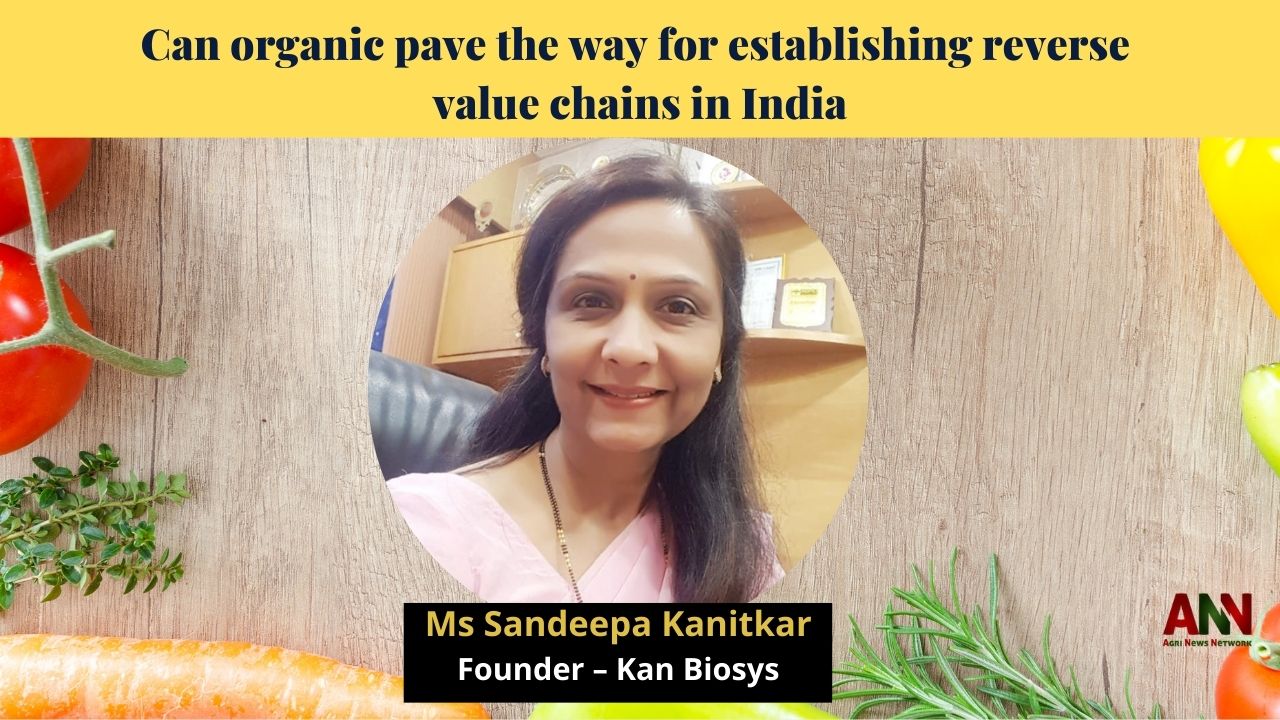We missed the bus for India to be a food/fibre processing nation since 1947. When more than 70% of the people were dependent on agriculture our focus should have been aiming for food security. But it took us almost 3 decades after independence to wake up to feed hungry mouths. India has achieved food security with the green revolution and developments which have led to India even exporting surplus food. But much of our food is still lost due to absence of post-harvest. Other aspects of environmental foot prints like water scarcity, loss of soil fertility, food safety, climate change, reduction in profits for farmer are demanding change in systems. Farming is hungry for workable technologies which will put more money into the hands of the farmer and guarantee the consumer access to safe food.
We all hope Organic farming may have a different story to tell. This is primarily due to the fact that right now it is carried out mainly for the elites and exports. According to ASSOCHAM-EY study, India currently holds the ninth position among 178 countries that actively practice organic agriculture. At present, the country is home to more than 835,000 organic producers, 699 processors, 669 exporters and 1.49 million ha area under organic cultivation. However, with only a meagre 0.4% of the total agricultural land area designated for organic cultivation, the industry presents extensive scope for expansion. The current government has plans to convert 10% of the entire arable area organic by 2025. This is an uphill task but certainly ambitious.
According to the latest Assocham-FICCI report organic farming is a 4 billion dollar market in India growing at 23%. The largest market in the world however is the US which is 49 billion dollars out of the 110 billion dollar world market. [ FiBL IFOAM Report 2019 � The World of Organic Agriculture]. This is growing at 16%. So India is growing fast as it has the largest organic farmers in the world.
This paves way for improving the cost benefit ratio now in farming. There is also interest by big food processors/exporters who are consistently getting demand from overseas markets for organic produce. Be it basmati rice or spice or fruits the list is increasing day by day. There is renewed interest by Ecom and retailers also to stock organic food. We thus see many aggregating/processing companies foray to brand the organic produce. States have also jumped into the market with their brand for organic food.
This is helping create reverse value chains with till the farmers. The onset of digital and traceability is supporting the demand. Be it satellite mapping, monitoring, certification, package of practices, certified organic inputs [ seeds, biofertilizers, biostimulants, biopesticides, biocontrol] need for technology voiced out at all levels. It is a customer driven approach which has the potential to steer the market which has the scope for trickling benefits to classes as well as masses of farmers.
India has also has scope to monetize its ambitious plan of targeting 10% of its area for organic farming. Some interventions in soil health management by sequestering carbon in soil, seed dressing with biopesticides and biofertilizers, controlling pests and diseases with biopesticides can be looked at. In any agricultural system there should an emphasis on holistic management or following certain package of practices for getting best out of technology.
Some useful interventions are as follows �
Improving the Soil organic carbon � this is the basis of organic farming systems. Soil can be the largest sink for putting the CO2 back into the soil. Best example of putting 2.5 tons of rice stubble back into the soil will solve issues of rice burning in north India and sugarcane trash all over. In situ incorporation by adjusting C:N ratio and using shallow aerobic fermentation using cellulolytic microbes is proving to be beneficial for the rice growers. There is scope for such technologies. Building soil carbon also helps improving the water holding ability and helps control weeds.
Though there are benefits for the farmer it needs to be monetized by carbon credits. This is still in nascent stage and we hope the government incentivizes industry or urban systems to buy carbon credits.
Using microbes for seed dressing � this is a very important aspect which needs to be considered by the government. Several good quality sturdy microbes can be used for factory/on -farm seed dressing. These microbes can help fix atmospheric nitrogen and help mobilize the nutrient reserves in soil for the benefit of the crop. Consortia of N,P,K, Zn microbes are available which are registered at FCO. Seed Act needs to be modified to accommodate microbial seed dressing.
Using biocontrol � carbon is food for the microbes in soil. Improvement in soil biodiversity helps in keeping the pathogens in check. Trichoderma viride, Bacillus subtilis and Pseudomonas flourescens is helping farmers ward of soil pathogens and foliar pathogens by proper positioning the microbial products.
The natural build-up of predators also keep a check on the insect pests. Use of biopesticides can be also integrated into the package of practices to arm the farmer with choices. The use of Beauverria bassiana to control pink bollworm or fall army worm is being use effectively by positioning the product at proper stages of crop cycle.
Many companies in India are producing certified microbial inputs as per NPOP, NOP, EU etc. Many of the microbial inputs are also registered at OMRI-USA. BASAI � which is an organization of key biological products manufacturers is trying to work with the government extension/ regulatory bodies to create awareness about use of microbials for sustainable as well as for organic farming.
Resilience is needed in farming systems as growing food needs to be sustainable and improving efficiencies of organic/sustainable farming may provide the answers.


